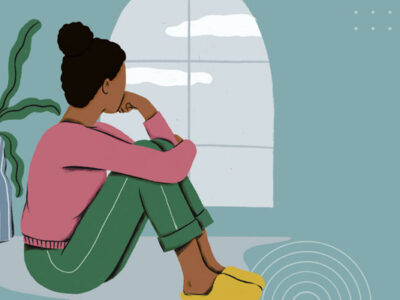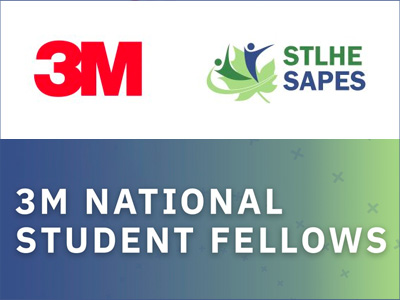Studies show that, in general, we tend to become more anxious when we do not feel in control of what is happening in our lives. With rising levels of student anxiety across all levels of education, scholars and practitioners alike have suggested that one potential strategy to alleviate these higher levels of anxiety is to foster classroom environments in which students are able to have more control over their academic development. The practice goes by many different names, including terms such as student choice, democratic classrooms, student partners, and power-sharing, but ultimately, they all entail giving over a degree of individual and collective decision-making to students.
The following are common practices that may foster a sense of shared control.
Student Choices. The practice of giving students choices in what assignments they complete and how they complete them is a central tenet of universal design for learning (UDL), which emphasizes flexibility to facilitate multiple pathways to learning. An example might be allowing students to choose the topics for an assignment, so they can choose something that especially interests them. Another possibility might be giving them choices in terms of the final product, such as selecting either a paper, video, or a PowerPoint slide deck to communicate their work.
Democratic Classroom. In a democratic classroom, students are empowered to make decisions about how the class is run. An example might be allowing students to vote on setting a due date for a project or hosting an open forum to determine what the next topics covered in class might be. While there are some practitioners who make explicit connections between these practices and democratic values, this link is not required for the activities associated with it to be effective. Indeed, research has identified this type of shared decision-making as contributing significantly to open and inclusive classroom environments.
Collaborative Syllabus. Collaborative syllabi creation has become increasingly popular at US institutions since the COVID-19 pandemic. It allows students to collaborate with their instructors on significant aspects of a course syllabus and, by extension, its design. For some, this takes the form of collaborative course policies, which can be codified in the form of a shared contract, while for others it can include any aspect of the course upon which students wish to have input (and which is not required by the institution). Most commonly, the collaboration takes place primarily at the beginning of class, but for others, it can be an on-going dialogue that enfolds as the course progresses, and, at times, even extends into co-creation of emerging courses.
Collaborative Assessment. We covered the ungrading movement in a previous blog posting, but it perhaps deserves to be mentioned here as well. We all know how much anxiety students manifest specifically around tests and grades.Alleviating that anxiety is a primary motivator for many forms of ungrading, but the integration of collaborative processes, such as allowing students to determine the relative weights of course assessments as part of their final grade, is believed to enhance the potentially soothing effects by integrating an element of agency or control. Speaking of anxiety and control, the prospect of creating spaces for students to exercise control over classroom activities can make some instructors uncomfortable. In other words, if you find reading about some of these activities somewhat disconcerting, you are not alone. It is important to recognize that these are not just new activities, but they can represent a deeper shift about how we view our respective roles, as students and faculty, in our shared learning spaces. You might start simply by asking yourself what aspects of your teaching and learning practice, if any, would you be comfortable giving over to your students. If you’re interested in trying it out, we recommended that you start with something small, such as voting on due dates, and then reflect and re-assess for the next time.
Want to read more? The following list is a selection of research articles, intentionally selected to incorporate a variety of disciplinary perspectives.
Barros-Lane, L., Smith, D. S., McCarty, D., Perez, S., & Sirrianni, L. (2022). Solidarity in time of a pandemic: A qualitative study of student experiences of power-sharing and collaboration during COVID-19. Journal of Social Work Education, 1-14.
Addy, T. M., Dube, D., Mitchell, K. A., & SoRelle, M. (2021). What Inclusive Instructors do: Principles and Practices for Excellence in College Teaching. Stylus Publishing, LLC.
Cook-Sather, A. (2020). Respecting voices: How the co-creation of teaching and learning can support academic staff, underrepresented students, and equitable practices. Higher Education, 79(5), 885-901.
Dewsbury, B., & Brame, C. J. (2019). Inclusive teaching. CBE—Life Sciences Education, 18(2), fe2.
Hull, K., Lawford, H., Hood, S., Oliveira, V., Murray, M., Trempe, M., Crooks, J. & Jensen, M. (2019). Student anxiety and evaluation. Collected Essays on Learning and Teaching, 12, 23-35.
Jafar, A. (2016). Student engagement, accountability, and empowerment: A case study of collaborative course design. Teaching Sociology, 44(3), 221-232.
Kaplan, D. M., & Renard, M. K. (2015). Negotiating your syllabus: Building a collaborative contract. Journal of Management Education, 39(3), 400-421.
Kennette, L. N., & Wilson, N. A. (2019). Universal design for learning (UDL): Student and faculty perceptions. Journal of Effective Teaching in Higher Education, 2(1), 1-26.
Marcus, M., & Tomasi, D. (2020). Emotional and cognitive responses to academic performance and grade anxiety. Journal of Medical Research and Health Sciences, 3(4), 919-925.
Nave, L. (2021). Universal design for learning (UDL) in online environments: The HOW of learning. Journal of Developmental Education, 44(3), 34-35.
Laura Cruz (PhD, University of California at Berkeley, 2001) is an Associate Research Professor of Teaching and Learning Scholarship with the Schreyer Institute for Teaching Excellence at Penn State. She also holds a position as visiting faculty with the Faculty of Medicine at the University of Prishtina in Kosovo, part of a Fulbright specialist appointment.
Before coming to Penn State, she served as the director of two centers for teaching and learning and editor-in-chief for four journals in the field. Her published work comprises 100+ studies in history, pedagogy, and educational development, including her most recent co-authored book, Taking Flight: Making your Center for Teaching and Learning Soar (Stylus).









Comments